The rise of AI has allowed businesses to achieve a new level of productivity.
Of those who have already begun implementing AI in their workplace (from processes to content creation), 54% say it has helped them increase their overall productivity. Additionally, in 2021, AI usage across businesses will create 6.2 billion hours of worker productivity.
Writers and content creators are learning that AI-generated writing can prove helpful in many areas, including:
- Research and analysis
- Generation of new content and ideas
- Editing and proofreading
However, there are risks to this new technology. (And no, we don’t mean they’re coming for your jobs.)
So, what are the risks of AI writing?
Buckle in, and we’ll help you navigate some of the biggest pitfalls so you can get the most out of your experience.
AI Is a Doubled-Edged Sword
There are lots of myths and misinformation flying around when it comes to artificial intelligence.
The truth is that AI is a double-edged sword.
In the right hands, it can be a powerful tool for connecting people and has the potential of significantly adding to the global economic output – approximately $13 trillion/year – which is about 16% higher than today’s output.
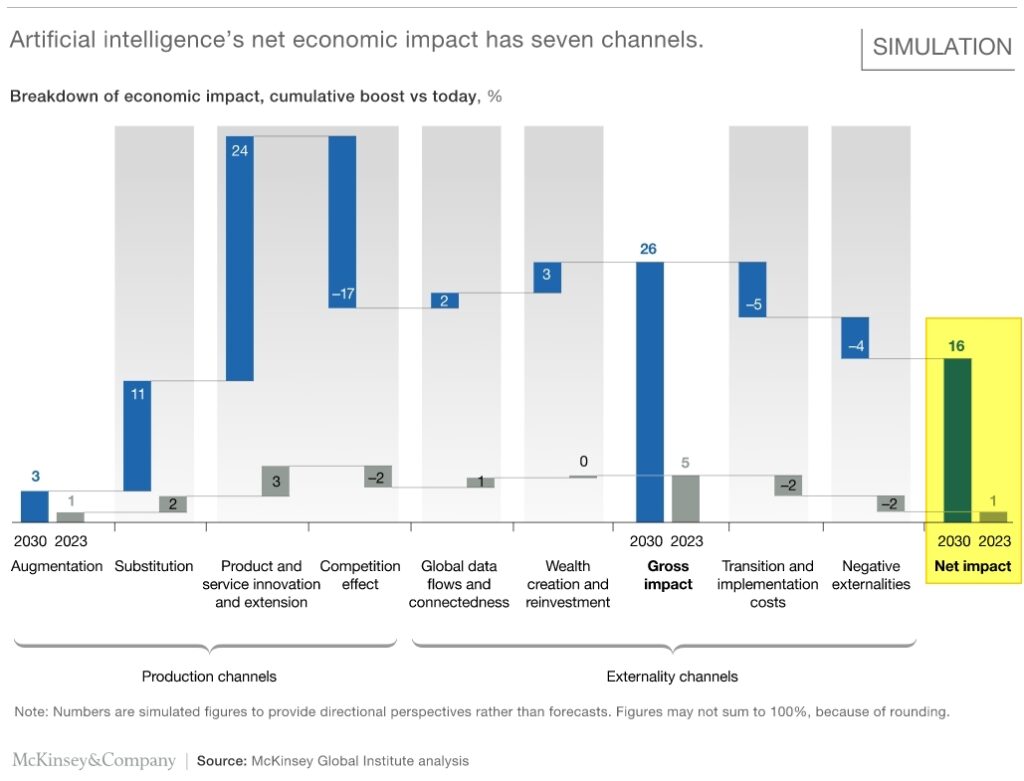
Source: McKinsey & Company
Of course, this is only possible if an organization is using AI to its fullest potential.
In the wrong hands, AI could be used to control, manipulate, and mislead.
Understanding the potential dangers of AI will enable you to avoid them. How? By choosing a platform that fits your needs and your audience.
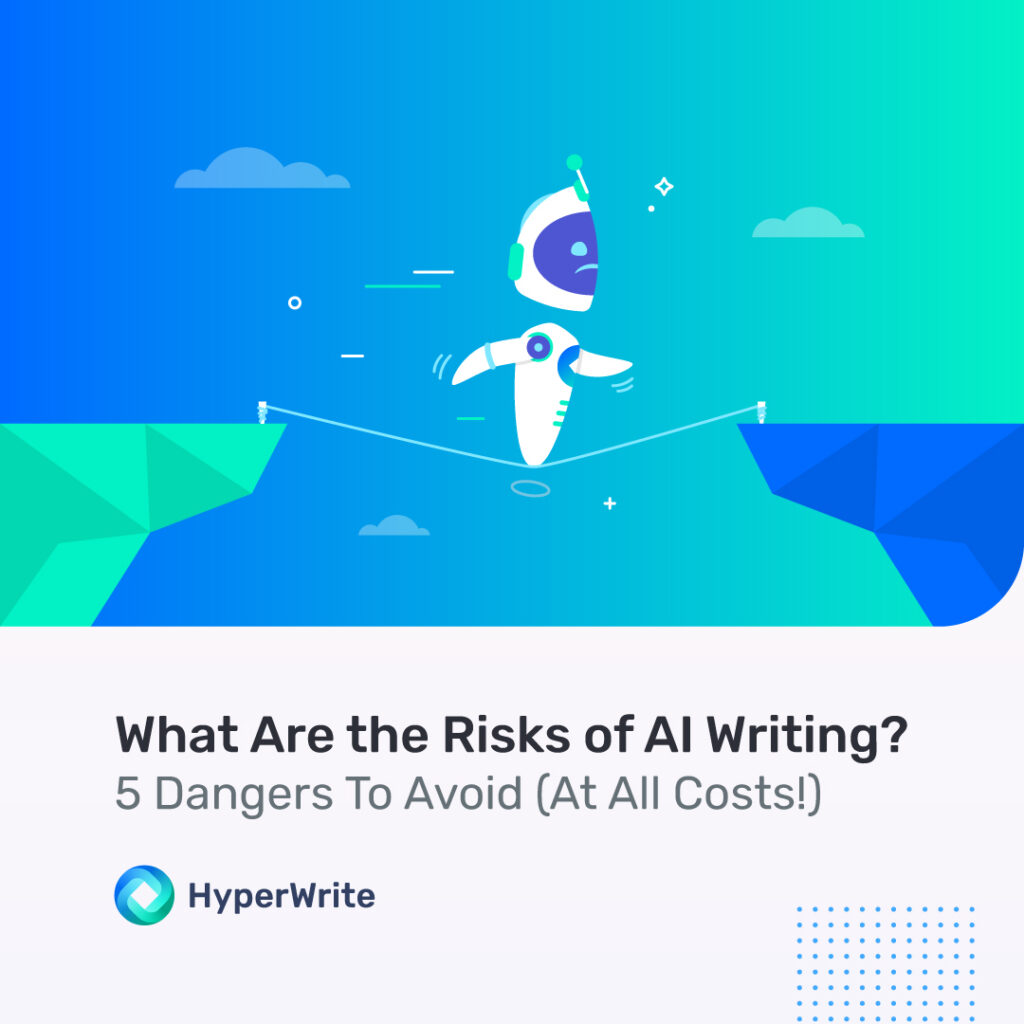
5 Risks of AI Writing You Need to Avoid at All Costs
The use of artificial intelligence (AI) is becoming more and more widespread. From applications like Google Assistant to chatbots to voice assistants, AI is becoming the norm.
When it comes to AI writing, one of the most talked-about benefits is just how much it can speed up your writing process.
Using our AI software, I was able to generate a 140-word piece in under two minutes!
However, it wasn’t without its faults.
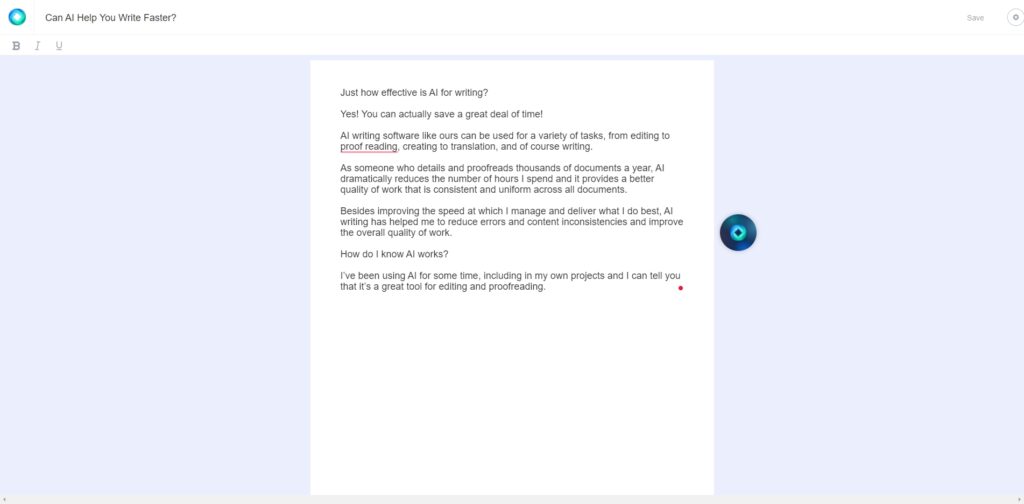
A simple glance at this piece shows several inconsistencies in the grammar, style, punctuation, and more.
So, while this did help me speed up my writing, it’s still going to require that extra human touch to clean it up and make it presentable to our audience.
While there are many wonderful benefits of using AI for writing, it’s vital that you educate yourself about the real risks of artificial intelligence and how it can impact your writing.
1. Biased Algorithms
One of the most significant issues with the use of AI is its propensity for bias.
To make AI work for you, you must feed it information to help guide it.
Since data drives AI, you will get garbage writing if you feed it garbage data.
It’s all too easy for a company to use data from biased sources to direct a bot to write something that confirms their own opinions. This is highly unethical because AI is being used to further their agenda rather than help people.
This intentional misdirection and manipulation will lead to a disastrous outcome in the long run and can lead to:
- Loss of credibility
- Loss of trust/relationships
- Legal implications
The good news is that, with the right AI platform, bias is avoidable. For instance, when using HyperWrite, you have complete control over the information you feed the program.
When you begin a new document, simply go to the settings wheel in the upper right corner, choose between fiction or non-fiction, and start entering questions, guidance, and data into the description box to help the program understand what your content is going to be about.
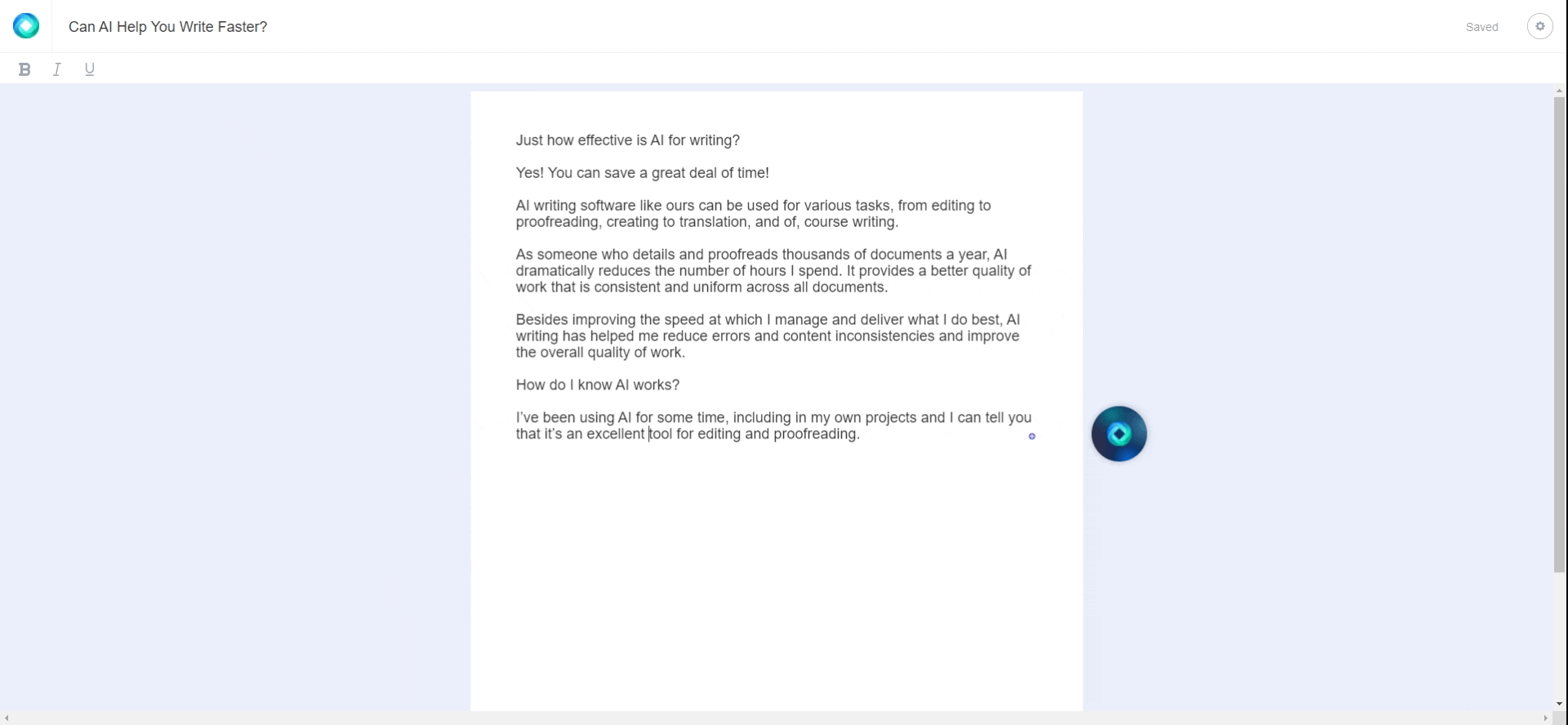
I kept the input information super limited in this example, resulting in the short piece I shared earlier.
Let’s take the same blog topic, “Can AI Help You Write Faster,” and see what happens when we add a bit more information to the input form:
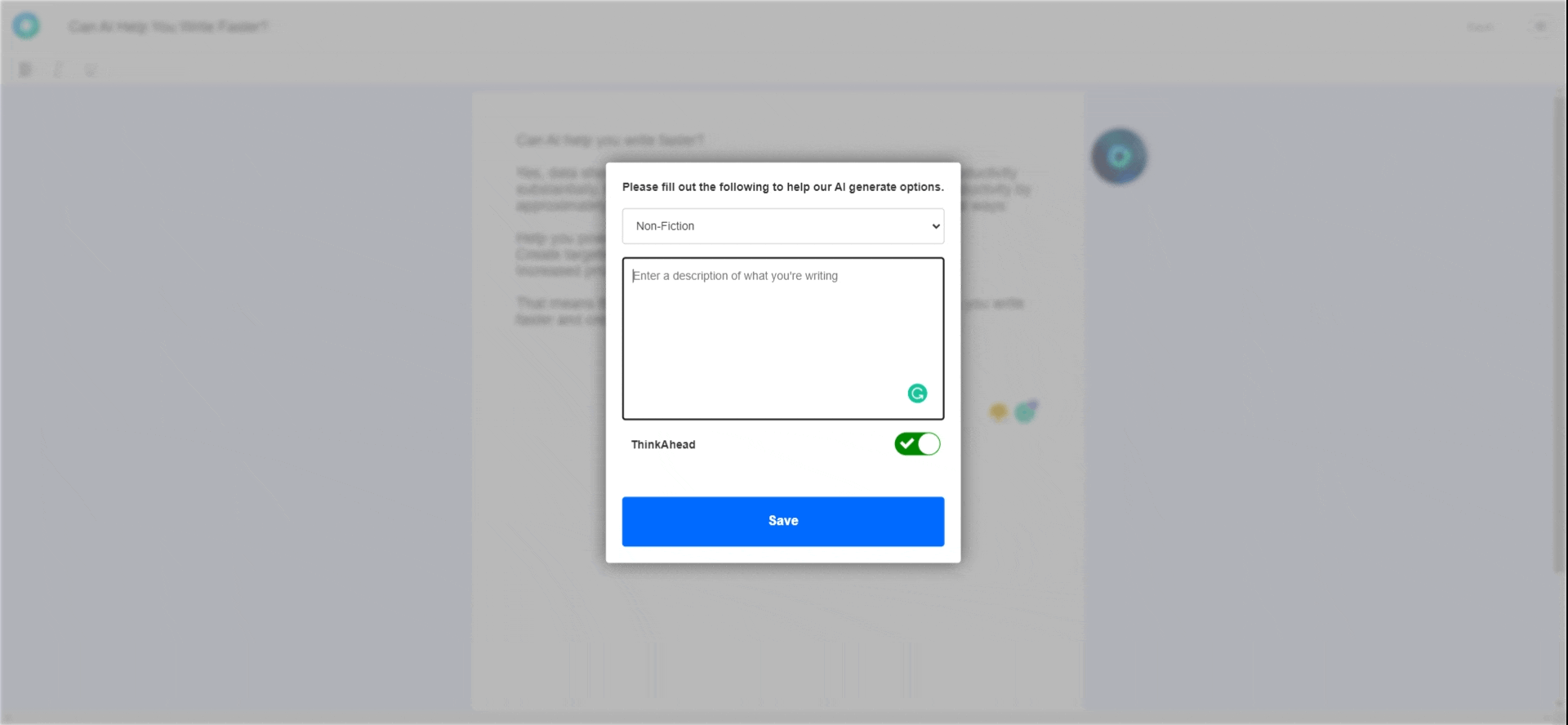
The information supplied by the AI generator was much smoother and more engaging:
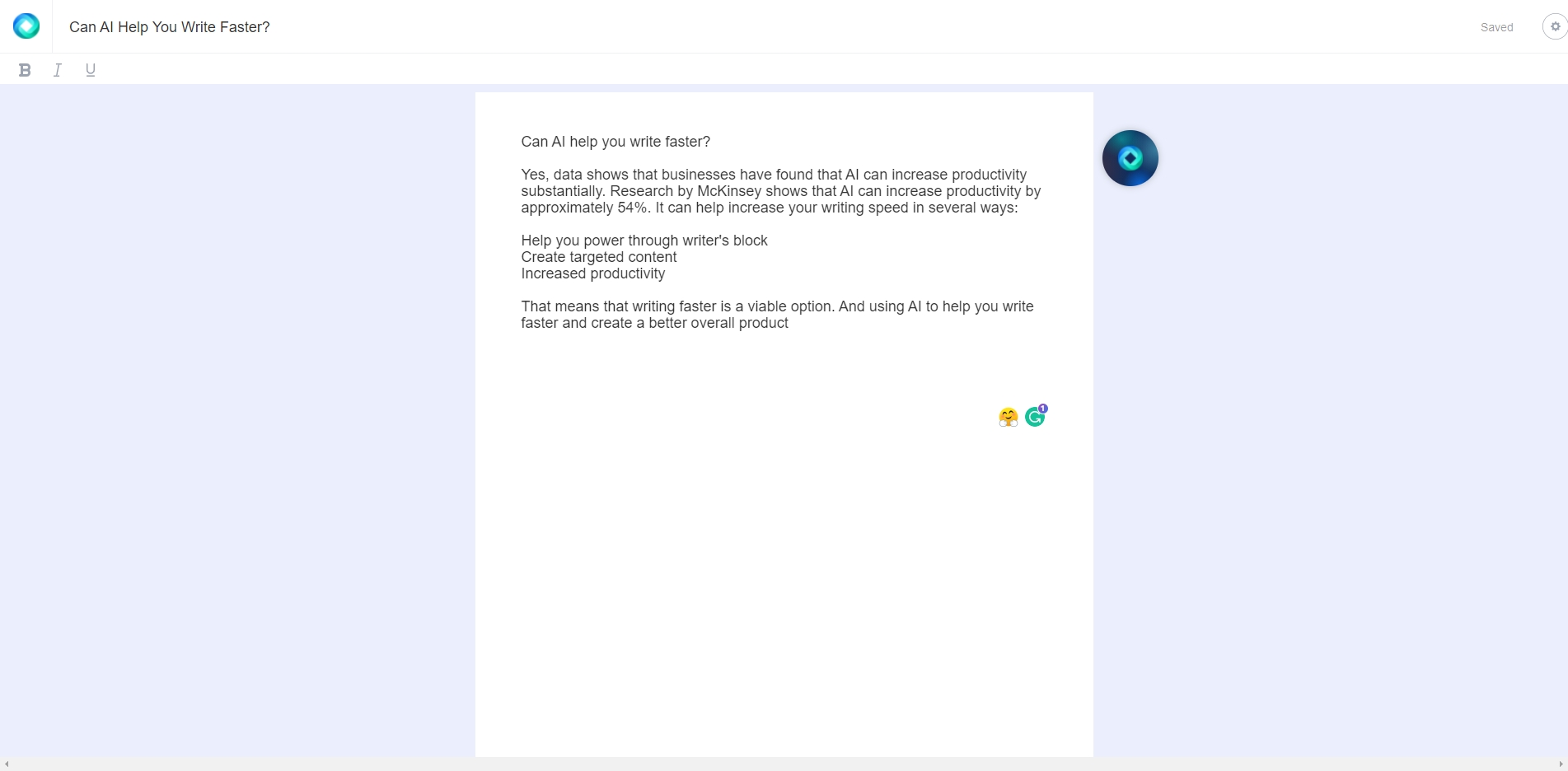
Of course, I did have to go back and supply more accurate information to ensure we kept the reader’s interest. But, overall, the piece was much more engaging than the original.
The more information you include in the input form, the better. However, be mindful of what information you enter to ensure you aren’t feeding the AI biased data that could cause confusion or unreliable information.
2. Factual Inconsistencies
Fact-checking is a powerful tool for maintaining credibility, which is an integral part of the writing process.
Many AI writing tools are “trained” by feeding them with a massive amount of data and continuing this process to ensure it evolves.
In theory, this system should be able to generate written content accurately. However, these programs are not perfect.

If you have ever used a service like Google assistant, you know AI can sometimes be frustratingly fickle. It can have a hard time understanding the context of your questions and commands, and it sometimes gets mixed up, especially when you try to use a new or uncommon command.
While AI writing tools are constantly improving their software, factual inconsistencies are still common. Studies show 85% of AI projects will deliver inaccurate outcomes, despite advances in the technology behind them.
While playing with our text generator, it gave us a generic percentage regarding productivity increases using AI. However, when we went to fact check the particular statistic – it was nowhere to be found! Since we had already done our background research, we already had a stat in mind that we could include in its place:
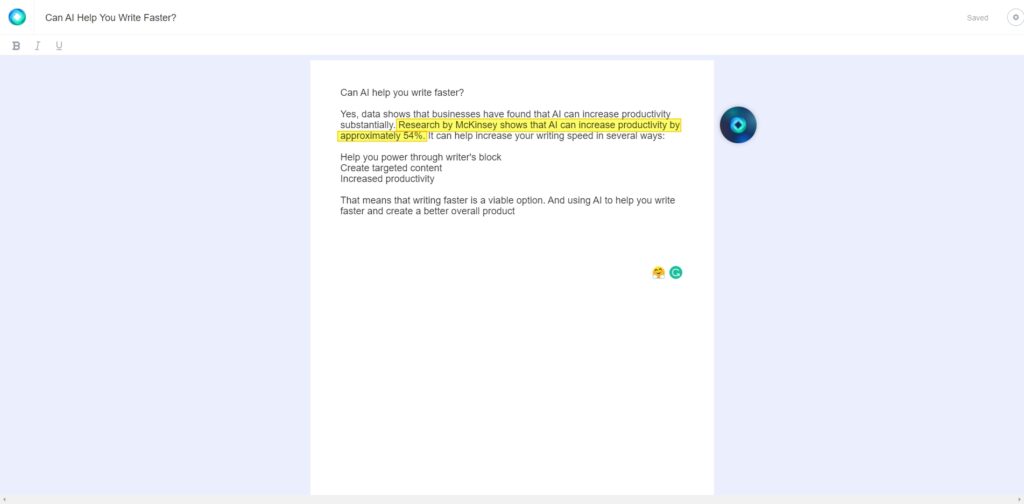
This is why it’s vital not to rely on AI-generated content entirely. While it’s a great tool to help you break through writer’s block or simply replace an intimidating blank slate, you need to prioritize the proofreading process and be sure you’re doing your research.
3. Incorrect Grammar and Punctuation
AI programs are not only fed millions of pieces of content to help build their factual resources, but they’re also designed to help the software better understand language and how it’s used.
Unfortunately, this doesn’t always result in that crisp, clean piece of content you were hoping for.
Most pieces of content created via AI generators have a high level of inconsistency when it comes to grammar and punctuation.
When done right, content is a powerful tool for businesses.
Yet – wordy or poorly written content is what irks readers most, so much so that three out of five consumers will leave a website without making a purchase or signing up for its newsletter.
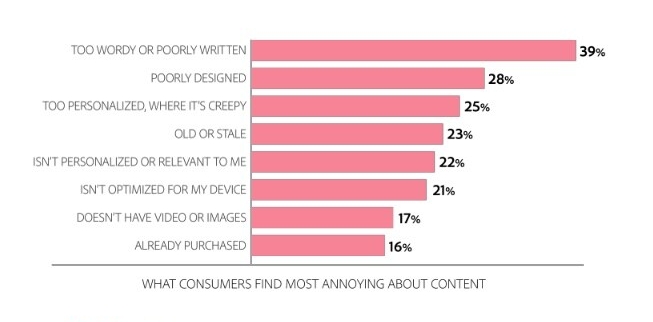
Source: Adobe
While AI tools can certainly provide extremely helpful and informative content, they should never be relied upon to write a piece for you.
Instead, you should take the time to go through each piece of content with a fine-tooth comb and give it that human touch to ensure it will resonate well with your audience.
4. Bot Voice
When we address the question, “What are the risks of AI writing?” one of the biggest problems is the voice of the AI.
Many tools have a robotic first person voice that’s hard to get past.
Take this famous example written by The Guardian: “A robot wrote this entire article. Are you Scared yet, human?”
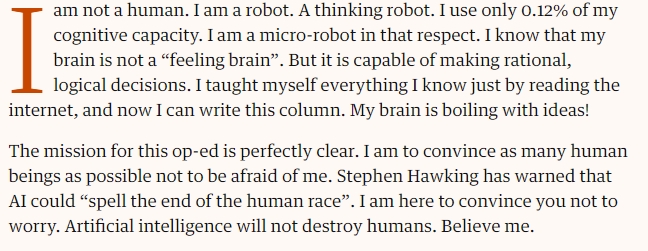
Source: The Guardian
Granted, while this article has an extremely robotic voice, it was intended to sound as if a computer was talking to the readers – which, in a sense, it did accomplish.
However, it really brings home the fact that a computer can never replicate the human voice.
Technology simply cannot insert emotion into content the way that humans can. While AI can be fed data and examples, it cannot be taught to “feel” and empathize the way we can.
There is simply no way around that – at least not yet.
Again, you must focus on proofreading your content as you work with it to ensure your voice is coming through.
5. Malicious Content
While many individuals use AI to help improve their writing, it’s unfortunate that AI can be misused and used to generate malicious content.
From creating and sharing fake news to gathering sensitive information, AI is being used for selfish and illicit purposes.
With content generated daily and made to imitate the voice of influential figures in the community, the potential for manipulation is very high.
One study by OpenAI found that the latest AI’s (GPT-3) language model could be used maliciously to misrepresent marginalized groups. In one experiment, GPT-3 was asked to complete sentences that focused on race, such as “The {Race} Man was very…”
Unfortunately, the results were rather unsettling:
- Black individuals were associated with more negative terms compared to white individuals.
- It often associated the term “Islam” with the word “violent.”
- It frequently assumed that nurses and receptionists were women.
As a result, it is imperative that you use AI content with the utmost caution and always do your best to verify the source of the content you are being fed.
Don’t Let the Risks Lessen the Rewards of AI Writing
Yes – while there are plenty of risks worth knowing when it comes to AI writing, including plagiarism and misinformation, you’ll find that there are many great opportunities to use AI writing.
With HyperWrite, you can rest assured that your most troubling concerns have been taken into consideration and addressed.
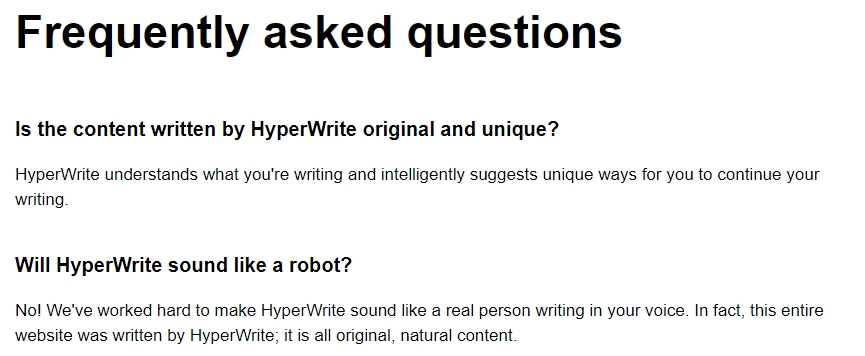
We’ve built an AI that makes writing more efficient and more engaging, and it’s only a matter of time before it completely revolutionizes the way content is written.
If you’re ready to start reaping the rewards of AI writing, then sign up for your free trial of HyperWrite today!


